Carina is a southern circumpolar constellation.
Click on image for full size
Windows to the Universe original image
Related links:
Keyhole Nebula
Carina
The constellation Carina is known as the Keel. A keel is the wooden bottom of old sailing ships. Carina used to be a part of the large constellation called Argo Navis. It was divided up into four different constellations: Carina, Puppis, Vela and Pyxis.
Carina is a Southern Circumpolar constellation. So if you live in the southern hemisphere, you will see Carina all year round. But if you live in the Northern Hemisphere, you will probably never see it.
Can you see the shape of a ship in the image? Remember, Carina is only the bottom of the ship. Many years ago, sailing ships had a "U-shaped" bottom, like the constellation. The circle on one end is the figurehead. Old boats used to put pretty statues like Mermaids or serpents on the front of their ships!
The Keyhole Nebula is in this constellation. You can see what it looks like by clicking the link below! Also, the second brightest star in the night sky is in Carina. It is named Canopus.
You might also be interested in:
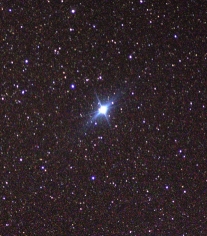
What's in a Name: The name of the pilot of Menelaus' fleet. Claim to Fame: Second brightest star in the night sky behind Sirius. Type of Star: Yellow-white Supergiant How Far Away: 1,200 light years away
...more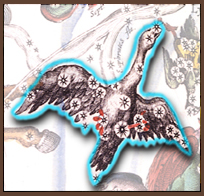
Many different constellations fill the evening sky in the southern hemisphere. Depending on your location and the season, different constellations can be seen. Southern circumpolar constellations can be
...more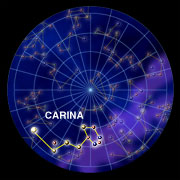
The constellation Carina is known as the Keel. A keel is the wooden bottom of old sailing ships. Carina used to be a part of the large constellation called Argo Navis. It was divided up into four different
...more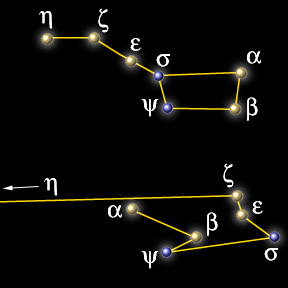
In most cases, however, the stars that we see that seem to be "close" to each other actually are quite far apart, some stars are much closer or farther than others as is shown in the example below of Ursa
...more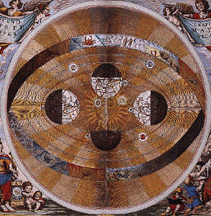
In our time, scientists (and most people!) know that the constellations seem to move across the sky because the earth rotates on its axis. What, you may ask, does the turning of the earth have to do with
...more
If you look at the night sky different times of the year you see different constellations. This change is due to the motion of the Earth in its orbit around the Sun. Each day a few stars are visible in
...more
Constellations are pictures made up of bright stars which appear close to each other on the sky. Like a game of connect the dots, if you use your imagination when you look at the stars, you may see a dog
...more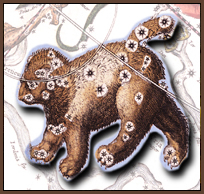
Many different constellations fill the evening sky in the northern hemisphere. Depending on your location and the season, different constellations can be seen. Northern circumpolar constellations can be
...more













